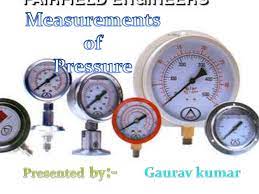When it comes to medical devices, few are as vital as intravenous (IV) lines Arterial System. Although IV lines continue to save countless lives, in rare cases they can cause serious harm or death if air bubbles enter a patient’s body through them. Why? Because air bubbles can cause a blockage in blood vessels called an air or gas embolism. Gas embolisms pose a serious threat to human life. To understand the true seriousness of such a situation, let’s break down how air embolisms happen and what can be done to prevent them.
What happens when air bubbles enter the human body?
Gerard J. Myers describes it best when he states that bubbles or any particles entering our bloodstream are foreign to our circulation and physiology. When the bubbles enter the body, they are not welcomed with open arms; rather, they are treated as foreign invaders who must be extinguished. In response to this “invasion”, our body covers the bubbles with platelets, white blood cells and other proteins. If the bubbles pass through the bloodstream, they often damage our glycocalyx endothelial cells, which line our blood vessels.
After damaging the lining of blood vessels, the air bubbles will try to pass through our capillaries, but even tiny bubbles will not be small enough. The bubbles can then break into smaller bubbles which can penetrate inside the capillary walls, which will cause blockage.
2 Dangerous Paths with Equally Frightening Results
In the most severe cases, a capillary blockage will prevent blood from moving from the heart to the rest of the body.
In the most severe cases, when a large amount of air is injected into a patient’s bloodstream, an air embolism can completely block the passage of blood through a vein or artery, depriving vital parts of the body of the necessary blood flow.
Symptoms of an air embolism can range from joint pain, anxiety, and chest pain to paralysis of the extremities, loss of consciousness, and death. If the embolism prevents blood from reaching the brain, stroke or death becomes a real possibility.
The Venous Vs. The Arterial System:
For a detailed explanation, watch the video below:
Air bubbles in the arterial system pose a greater threat than air bubbles in the venous system because arterial air can travel to the brain and cause a stroke. In this case, a venous embolism can become a much more problematic arterial embolism.
How much air is too much?
The risks are even greater in small children where the total blood volume is much smaller than in adults.
However, recent research shows that this may not be the case. As described above, even small amounts of air can damage the endothelial glycocalyx, the lining of blood vessels.
gas embolism treatment
In short, yes, but only in certain situations. The best thing to do is to prevent gas embolisms from happening in the first place.
Prevention is the best cure: how our pressure sensitive film can help detect and exterminate air in IV lines, infusion pumps and fluid heaters
designed to deliver liquid
a recently released FDA safety communication highlights the importance of following proper procedures to avoid air bubbles when using these types of devices.
validate bubble sensors
We are proud to say that our custom calibrates pressure indicating film gives this device hawk alertness.
Conclusion
We are proud to say that our custom calibrates pressure indicating film gives this device hawk alertness. Our bubble detectors trigger an immediate response. the air is diverts to a separate waste collection bag. It can reach the patient’s circulatory system. Without a doubt, the built-in capabilities of this product are revolutionary, providing a solution that protects patients from gas embolism while significantly reducing alarm fatigue.























![To Increase YouTube Subscribers Must Use These Service Provider [New]](https://businessleed.com/wp-content/uploads/2022/11/To-Increase-YouTube-Subscribers-Must-Use-These-Service-Provider-New-360x180.jpg)














